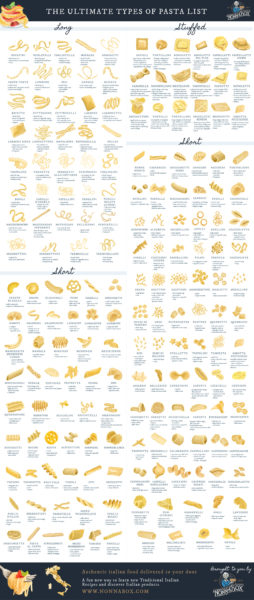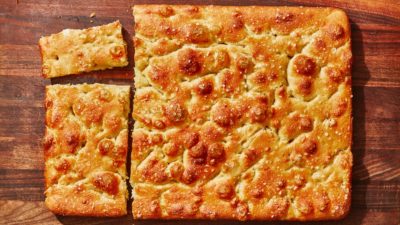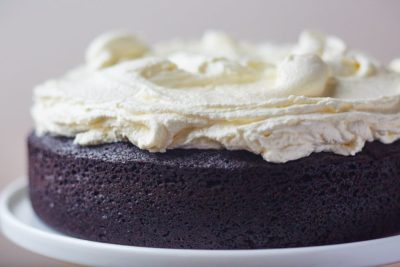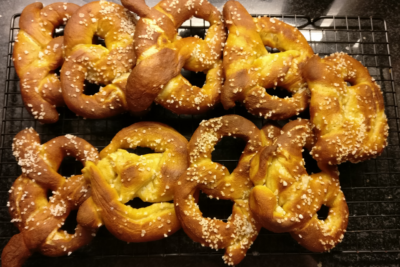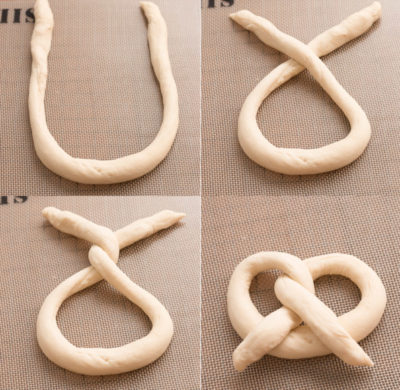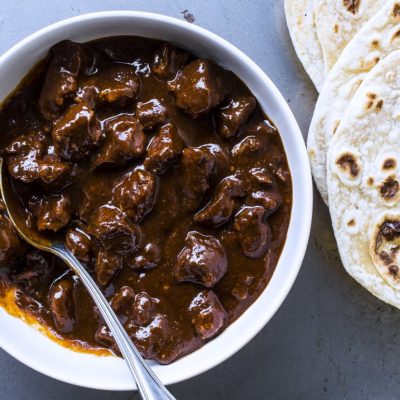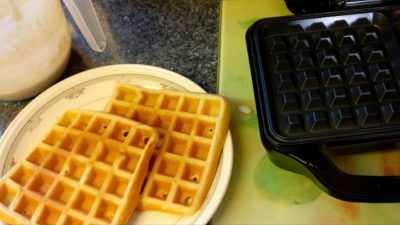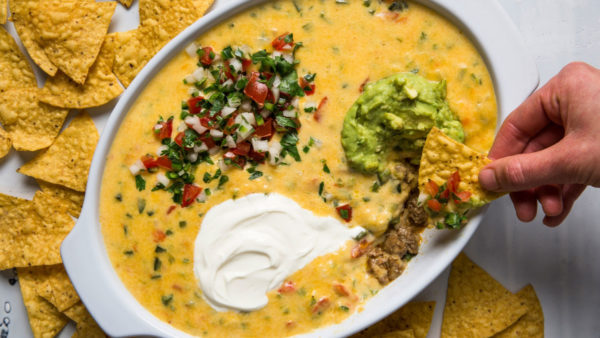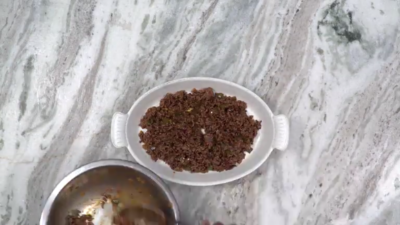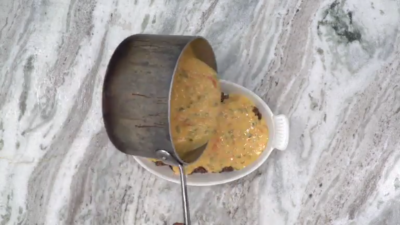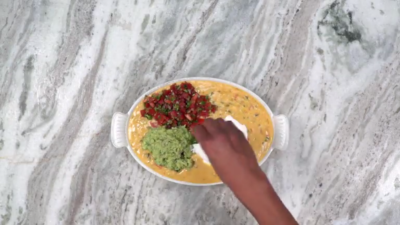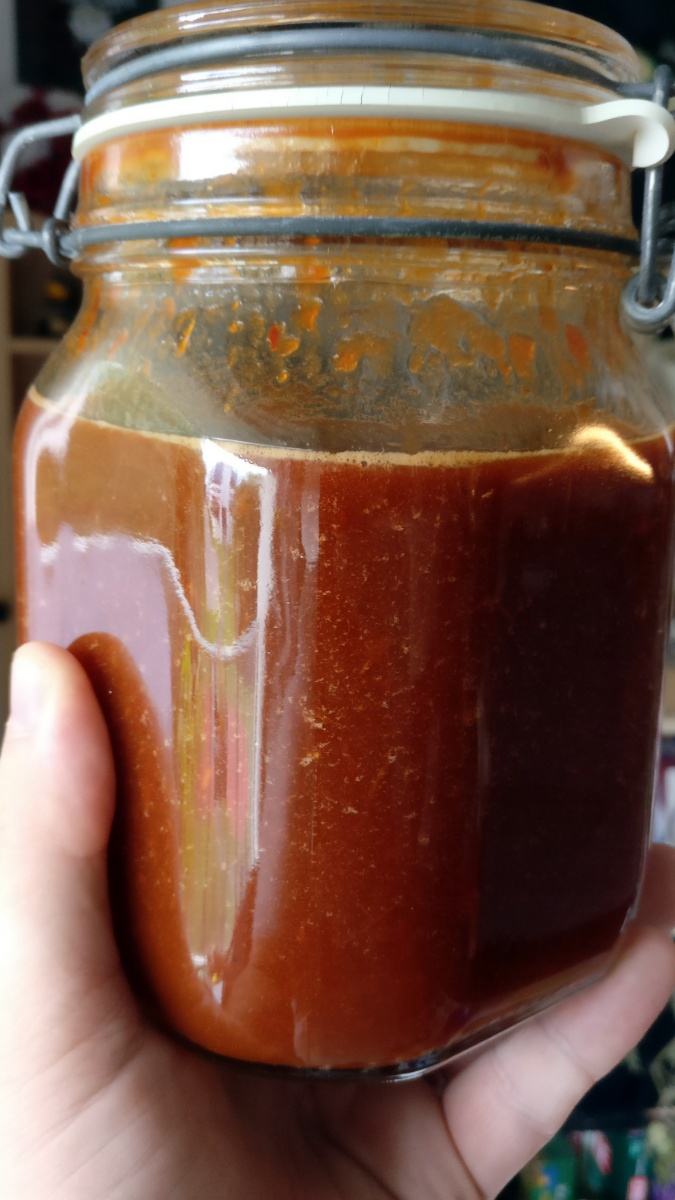Tag: recipes
[recipe] Bibimbap
Toriko doesn’t disappoint. Beef, egg, veg and rice. I could live on this for ever!
Bibimbap is Korean mixed rice. It includes rice, meat, vegetables and a spicy sauce. You typically serve these in a hot stone bowl. Once served, you mix them all together nicely and shove them into your mouth. It’s super delicious and hugely addictive.
If you serve bibimbap in a normal bowl, you will notice that the rice cools down quite fast. There’s nothing wrong with that. However, some people prefer having the rice and all the other ingredients in bibimbap warm if not hot. That’s when the stone bowl comes in handy. If you prepare and serve your bibimbap in a hot stone bowl, your bibimbap will be not only nicely warm, but also it will often have a nice crispy layer of rice at the bottom of the bowl.
Ingredients (4 servings)
MEAT AND MEAT MARINADE
100g / 3.5 ounces rib eye fillets, thinly sliced
1 Tbsp soy sauce
1 Tbsp sesame oil
1 tsp sugar
VEGETABLES AND OTHER
1/2 cups (60 g / 2 ounces) carrots, julienned
1/2 cups (60 g / 2 ounces) wilted spinach, julienned
1/2 cups (60 g / 2 ounces) zucchini, julienned
1/2 cups (60 g / 2 ounces) bean sprouts, julienned
1/2 cups (60 g/ 2 ounces) shiitake mushrooms, thinly sliced
4 cups steamed rice
4 eggs
some cooking oil
sesame oil
fine sea salt
BIBIMBAP SAUCE
2 Tbsp gochujang (Korean chili paste)
1 Tbsp sesame oil
1 Tbsp sugar
1 Tbsp water
1 Tbsp roasted sesame seeds
1 tsp apple cider vinegar (or rice vinegar)
1. Prepare and cook ingredients:
– In a bowl, combine the meat with the marinade. Cover the bowl and leave it in the fridge while you are working on other the ingredients. When ready, add some cooking oil into a wok and cook the meat on medium high to high heat. It takes about 3 to 5 mins to thoroughly cook it.
– Separately sauté carrots, zucchini, mushrooms and bean sprouts in a frying pan. Season them lightly with fine sea salt.
– Mix the bibimbap sauce ingredients in a small bowl. Set aside.
– Pan fry the eggs per your preference. (Sunny side up is a popular choice.)
2. Assemble:
– Preheat an oven for 10 minutes at 220 C / 428 F. Once heated, place your stone bowl into the oven. Leave it there for 10 minutes. 10 minutes later, take it out. Drop in some sesame oil (about 1 Tbsp per medium size bowl) and brush it around. Quickly assemble your bibimbap ingredients inside the hot stone bowl. First you will have to lay down the rice. Make sure you flatten it well. Then add the meat, assorted vegetables, and the egg on top of the rice. Transfer the hot stone bowl onto the stove and cook it for 5 minutes over low heat. You will hear the rice crackling noise. Remove from the heat.
[recipe] Classic focaccia
Ingredients
6.25 cups bread flour (30 oz. or 850g)
2.25 tsp. active dry yeast (from one ¼-oz. packet)
Pinch of sugar
1 Tbsp. kosher salt
5 Tbsp. extra-virgin olive oil, divided, plus more for greasing and drizzling
Flaky sea salt
Recipe Preparation
Combine flour and 2.5 cups room-temperature water in the bowl of a stand mixer fitted with the dough hook. Mix on low speed, scraping down sides and hook as needed to incorporate any dry flour, until a shaggy dough forms. Remove dough hook and cover bowl with plastic. Let sit while you prepare the yeast (you can leave the dough in this state up to 2 hours).
Stir yeast, sugar, and 0.5 cup warm water with a fork in a small bowl to dissolve. Let sit until yeast is foamy, about 5 minutes.
Pour yeast mixture into stand mixer bowl and mix on low speed until dough absorbs all additional water, about 1 minute (pulse mixer on and off a couple of times at very beginning to prevent liquid from splashing over the sides). Add kosher salt and continue to mix, increasing speed to medium, until dough is extremely elastic and very sticky (it will look more like a thick batter and will stick to sides of bowl), about 5 minutes.
Pour 3 Tbsp. oil into a large (preferably glass) bowl and swirl to coat sides. Scrape in dough with a large spatula or flexible bench scraper. Cover and place in a warm spot until dough is doubled in volume, 2–3 hours. If using a glass bowl, it’s helpful to mark the position of the dough at the beginning so you can accurately assess the rise (a dry-erase marker or piece of tape works).
Drizzle 2 Tbsp. oil over a 18×13″ sheet pan and use fingertips to rub all over bottom and sides. Using large spatula or flexible bench scraper, fold dough inside bowl a couple of times to deflate, then scrape onto prepared baking sheet. Using oiled hands, lift up dough and fold over onto itself in half, then rotate baking sheet 90° and fold in half again. Cover dough with a piece of well-oiled plastic and let rest 10 minutes to let gluten relax.
Uncover and go back in with oiled hands, gently stretching dough (to avoid tearing) across length and width of baking sheet in an even layer, working all the way to edges and into corners. If dough starts to spring back, let sit 5–10 minutes and start again. Cover again with same piece of oiled plastic and chill at least 8 hours and up to 24.
Let sheet pan sit in a warm spot until dough is puffed and bubbly and nearly doubled in height, 45–65 minutes (if you’re using a standard half sheet pan, it will have risen to the very top of the sides). Meanwhile, place a rack in center of oven; preheat to 450F/225C.
Remove plastic and drizzle dough generously with more oil. Oil hands again and press fingertips firmly into dough, pushing down all the way to bottom of pan to dimple all over. Sprinkle generously with sea salt.
Bake focaccia until surface is deep golden brown all over, 25–35 minutes. Let cool in pan 10 minutes. Slide a thin metal spatula underneath focaccia to loosen from sheet pan (it may stick in a couple of places, so use some elbow grease to get underneath) and transfer to a wire rack. Let cool completely before cutting as desired.
[recipe] Guiness chocolate cake
Ingredients
Cake
1 cup unsalted butter
1 cup Guinness stout
3/4 cup extra-dark unsweetened cocoa powder
2 large eggs
1 cup sour cream
1 tablespoon vanilla extract
2 cups all-purpose flour
1 cup granulated sugar
1 cup packed light brown sugar
1 1/2 teaspoons baking soda
3/4 teaspoon salt
Frosting
1/2 cup unsalted butter, at room temperature
4 ounces cream cheese, at room temperature
2 cups powdered sugar, divided
Instructions
Arrange a rack in the middle of the oven and heat to 350F/175C. Grease a 9-inch round cake pan that is 3 inches deep. You can also line the bottom of the cake pan with parchment paper for extra insurance if you’d like.
Melt the butter in a small saucepan over medium heat. Add the Guinness and bring to a simmer.
Remove the pan from the heat and whisk in the cocoa. Set aside to cool for at least 10 minutes.
Place the eggs, sour cream, and vanilla in a large bowl and whisk to to combine.
Add the cooled cocoa mixture to the egg mixture and whisk until smooth.
Add the flour, sugar, brown sugar, baking soda, and salt. Whisk until well-combined.
Pour the batter (it will be quite thin) into the prepared cake pan. The pan will be quite full.
Bake until the cake springs back when pressed in the middle or a skewer inserted in the center comes out clean, 50 to 55 minutes.
Cool the cake in the pan on a wire rack for 30 minutes. Remove the cake from the pan and cool on the wire rack for 30 minutes to 1 hour more before frosting.
Make the frosting:
Place the butter in a large bowl. Beat with electric hand mixer on medium speed until lightened in texture and smooth, about 1 minute.
Add the cream cheese and beat on medium speed until homogeneous and light, about 3 minutes.
Add 1/2 cup of the sugar, and beat until incorporated at medium speed. Repeat scraping and beating in the remaining powdered sugar in 3 to 4 more batches. Beat the frosting again on medium speed until smooth and slightly increased in volume, 3 to 5 minutes.
Chocolate Guinness cake should be frosted to look like a pint of stout with foam on top. Pour the frosting on top of the cooled cake and spread it just to the edge of the cake but not over the sides. Slice and serve immediately, if desired, or let sit at room temperature for up to 1 hour before serving.
[recipe] sushi stuff
Teriyaki chicken, teriyaki salmon, prawns, spicy tuna, omelette, cucumber. All sorts of tasty goodies.
Sushi Rice
2 cups sushi rice
2 cups water
4 tablespoons rice vinegar
1 tablespoons sugar
2 teaspoons salt
2 tablespoons mirin
Rinse the rice only 3-5 times. The water does NOT have to run clear. Place rice to drain in a strainer. Drain for one hourin the winter, 30 min in the summer.
While rice is draining, combine vinegar,sugar, salt and mirin together in a bowl and mix well.
Add rice to the pot. Bring quickly to a boil and then reduce to a simmer. Cover the pot and DON’T touch it until the end, NO PEEKING.
Cook for 15 minutes before removing the pot from the heat but keep the lid Closed. Let rice rest for 10 min and then remove the cover.
Place in a glass dish to cool and lightly fan the rice while adding the vinegar mixture. Mix rice gently, careful not to break it.
Sushi rice is best used at body temperature.
Tamago Yaki (Sushi Omelette)
4 large eggs
4 tablespoons dashi stock
1 tablespoon sugar
1 teaspoon mirin
1⁄2 teaspoon soy sauce
salt
Beat the eggs VERY well, being sure to get them as smooth as possible.
Pour about 1/4 of the mixture into a well-oiled tamago pan and spread as if you are making a crepe.
As the mixture cooks, bubbles and sets, roll it and move it to the back of the pan. Add more oil to the pan and some more of the mixture, making sure to get some under the roll.
As it cooks, roll the old roll back to the front of the pan, then again to the back.
Repeat until you are out of mixture.
Remove roll from the pan and roll as you would a sushi roll, squeezinng out excess liquid.
You can roll it into either a round or rectangular shape and slice it when it has cooled.
Can be served as is, or as nigiri, atop a mound of rice wrapped in a thin sheet of nori.
[recipe] soft pretzels
Makes 10 – 14
450g strong white flour, sifted
150gr strong brown flour, sifted
1 packet fast acting yeast
2 tbsp soft light brown sugar
1 tsp salt
1 tbsp vegetable oil
375ml warm water
For the bicarb solution:
75gr bicarbonate of soda
1 litre of water
Mix the two flours, salt, sugar and yeast in a large bowl. Make a well in the center of the dry mix. Mix the oil into the water in a measuring jug, and add in the well. Mix well to form a ball of dough. Add more water or flour where necessary to ensure it’s not too dry or sticky. Knead for 10 minutes, place the dough in an oiled bowl and allow to rise to double, about 2 hours.
Preheat the oven to 230 degrees Celcius. Punch back the dough and knead on a lightly floured surface and then divide it into 10 – 14 balls, each weighing about 100gr. Line a baking tray with parchment. Roll each ball into a sausage shape the thickness of a pencil and then roll it into a pretzel shape. Allow to rise for a further 20 minutes.
Bring the water to the boil in a saucepan and dissolve the bicarb in it. Leave it on a simmer and add each pretzel, no more than 3 at a time, to poach for 30 seconds each side. Remove and place on the baking trays. Sprinkle with rock salt, poppy seeds or sesame seeds and bake for 8 – 10 minutes, cooling them on wire racks. Alternatively, bake them plain and then brush with butter melted with sugar, honey and cinnamon.
[recipe] chili colorado
4 dried ancho chiles
2 dried pasillas
4 dried guajillo
1.5L chicken stock, separated
1 onion peeled and quartered
2 tsp ground cumin
2 tsp Mexican oregano dried
2 Bay leaves
1kg pork shoulder cubed
2 tsp kosher salt
1 tsp black pepper
2 tbsp vegetable oil
2 cups small white potatoes quartered
Remove the stems (and seeds if you want it milder in heat), from the anchos, pasillas, and guajillos. Cover chiles with 500ml boiling chicken stock and let them steam for about 30 minutes until they are tender. Put the chiles and all of the chicken stock, onion, cumin and Mexican oregano into a blender and purée until smooth. Set aside.
Cut the pork shoulder into half inch cubes, season with the kosher salt and pepper, and brown the meat in a large, stock pot over medium heat with oil.
Add the rest of chicken stock and bay leaves and simmer on low uncovered for one hour. Stir in the potatoes and chile purée. Simmer for another 45 minutes uncovered until the meat is tender and the sauce is a thick, deep red color. Season with additional salt. Serve with warm tortillas and some sour cream.
[recipe] Waffles
250g plain flour
360ml whole milk
2 large eggs
90g melted butter
1 tbsp vanilla extract
4 tbsp sugar
4 tsp baking powder
1/2 tsp salt
Sift dry ingredients together.
Mix wet ingredients together in a separate bowl.
Combine and mix well.
Let stand 20 minutes while you prep the waffle maker.
Mine take 8 minutes to cook.
[recipe] Chile con queso dip
Picadillo
1 tbsp vegetable oil
500g ground beef (20% fat)
1 medium onion, chopped
1/2 green bell pepper, chopped
Kosher salt, freshly ground pepper
1.5 tsp ground cumin
1 tsp chili powder
1 cup chicken stock
Queso And Assembly
3 tbsp unsalted butter
1 medium onion, finely chopped
1 large poblano chile, chopped
3 jalapeños, finely chopped
2 medium tomatoes, chopped
Kosher salt
2 tbsp all-purpose flour
1.5 cups (or more) milk
200g Monterey Jack cheese, grated (or Muenster, Havarti or Gouda)
200g cheddar cheese, grated
Pico de Gallo, Guacamole, sour cream, chopped chives, chopped coriander, and corn chips (for serving)
Preparation
Heat oil in a large skillet over high. Cook beef, breaking up with a spoon, until browned on all sides but not completely cooked through, 6–8 minutes. Transfer to a medium bowl, leaving as much fat in pan as possible.
Reduce heat to medium and cook onion and bell pepper, stirring, until tender but not browned, 6–8 minutes; season with salt and pepper. Add cumin and chili powder and cook, stirring, until fragrant, about 1 minute. Add chicken stock and reserved beef along with any accumulated juices to pan. Bring to a simmer and cook, stirring and scraping up any brown bits from the skillet, until liquid is evaporated, 8–10 minutes; season with salt and pepper. Transfer to a medium bowl, cover, let sit until ready to use.
Melt butter in a medium saucepan over medium heat. Cook onion, chile, and jalapeños, stirring, until tender but not browned, 8–10 minutes. Add tomatoes, season with salt, and continue to cook until juices have evaporated, about 6 minutes. Stir in flour and cook until incorporated, about 1 minute. Whisk in milk and continue to cook until mixture comes to a boil and thickens, about 4 minutes. Reduce heat to low, gradually add both cheeses, and cook, stirring constantly, until cheese is completely melted and queso is smooth. If it seems too thick, stir in a little more milk.
Spread warm picadillo in a 2-qt. baking dish. Pour hot queso over meat. Top with a generous scoop each of pico de gallo, guacamole, and sour cream. Sprinkle with chives and cilantro. Serve hot dip with chips.
[recipe] Roasted red pepper chili sauce
Rehydrate dried chilies
I started with chile de arbol, ancho and guajillo chilies. Scoop out the insides of the dried pods with a knife. You can do this step after they are rehydrated, but I like to trim it out while dry. If you find this difficult, scoop out the innards later.
Heat a large pan to medium-high heat and dry roast the peppers about 30-60 seconds per side. They will become slightly puffy and fragrant.
Set peppers into an oven proof bowl and pour boiling water over them. Use just enough to cover the peppers. Cover and allow to sit 15-30 minutes, depending on the thickness of your peppers.
Roast red peppers
Halve two red pepper and remove seeds. Place the peppers cut side down on a rimmed baking sheet that has been lined with parchment paper.
Roast the peppers in the pre-heated 215 degree oven for about 25 minutes; or until the skins are completely wrinkled and the peppers are charred, rotating the sheet if necessary for them to cook evenly. Let the peppers cool for a minute or two, and then remove them from the baking sheet and place them in a bowl.
Cover the bowl with foil or a plate, and let cool for about 30 minutes. When the peppers are cool enough to handle, peel off the skins and discard them, dropping the peppers back into the bowl.
Making the sauce
Blend the rehydrated pepper and roasted peppers with some of the rehydration water. Mix in some apple cider vinegar. The ratio of peppers to vinegar is usually between 1:2 to 1:4, so if you have a half-cup of chilies go for one to two cups of vinegar. Add one teaspoon of salt and a tablespoon of raw sugar. Blend until smooth.
Taste, taste, taste. Fix, fix, fix. Don’t take it out of the blender until you’re in love. When re-seasoning, your first instinct will probably be to reach for the sugar, but instead you might want to water it down with more vinegar or water first. Then you can go for the sugar.

